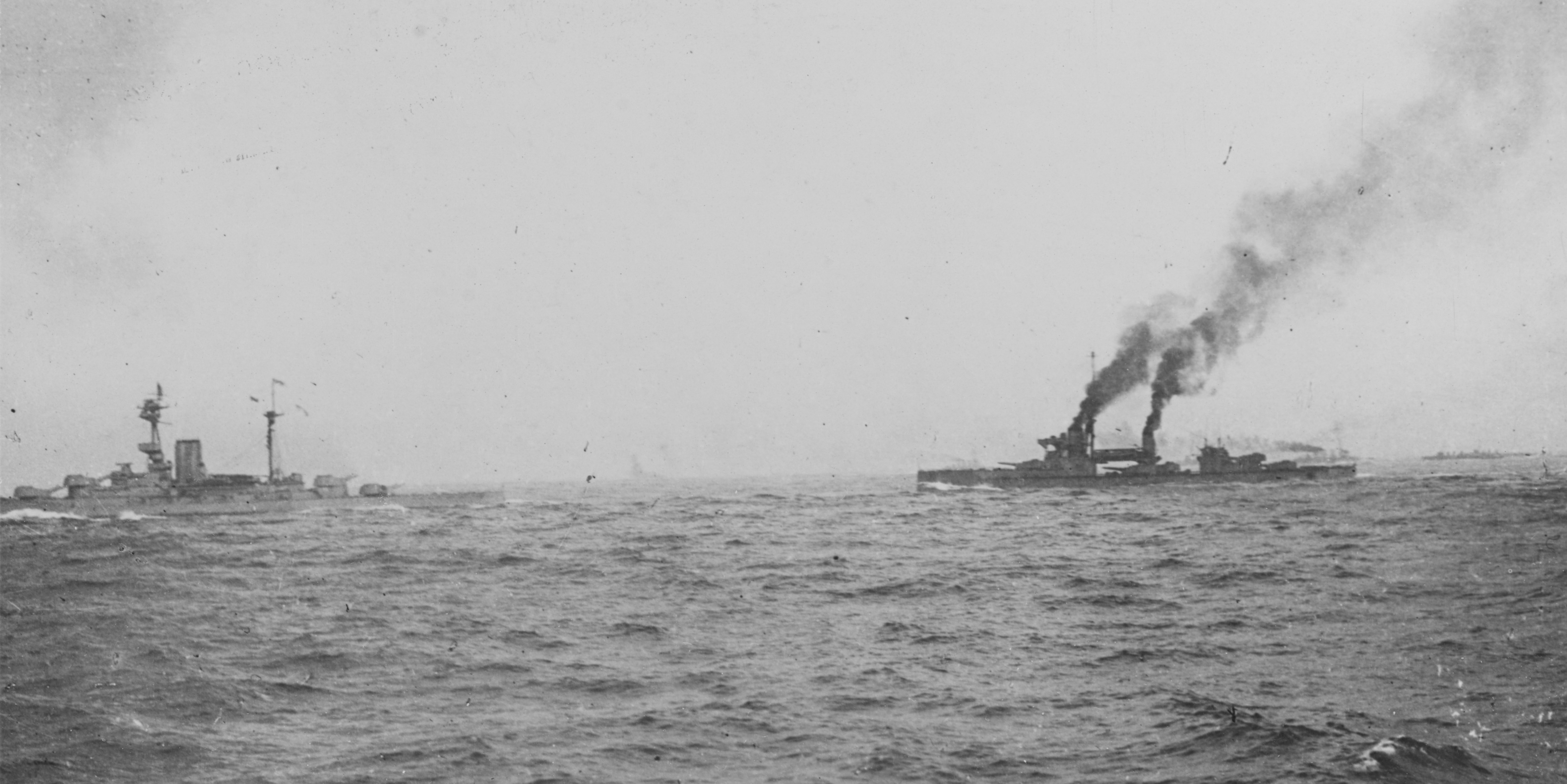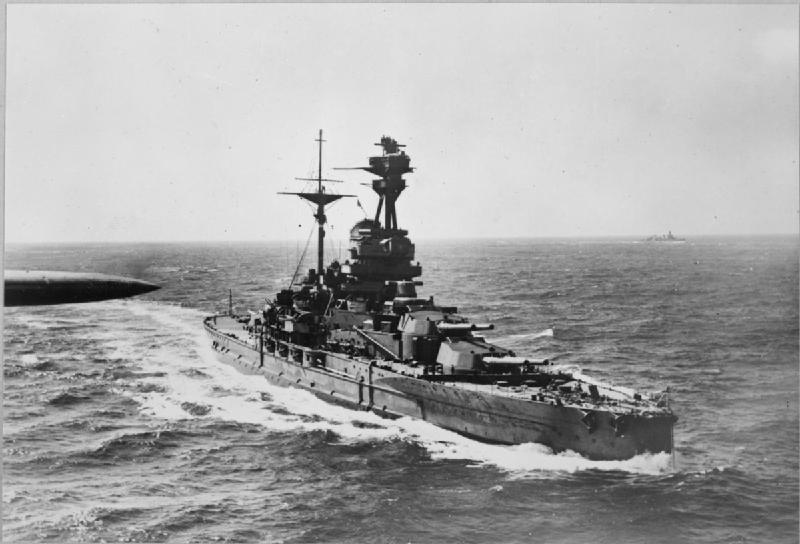1st Battle Squadron (United Kingdom) on:
[Wikipedia]
[Google]
[Amazon]
The 1st Battle Squadron was a
 During the Battle of Jutland, the composition of the 1st Battle Squadron was as follows:Macintyre, Donald. ''Jutland'' Evans Brothers Ltd. 1957;
* Sixth Division
* HMS ''Marlborough'' Flagship of Vice-Admiral Sir Cecil Burney; Captain G. P. Ross;
* HMS ''Revenge'' Captain E. B. Kiddle;
* HMS ''Hercules'' Captain L. Clinton-Baker;
* HMS ''Agincourt'' Captain H. M. Doughty;
* Fifth Division
* HMS ''Colossus'' Flagship of Rear Admiral E. F. A. Gaunt; Captain A. D. P. R. Pound;
* HMS ''Collingwood'' Captain J. C. Ley;
* HMS ''St. Vincent'' Captain W. W. Fisher;
* HMS ''Neptune'' Captain V. H. G. Bernard;
During the Battle of Jutland, the composition of the 1st Battle Squadron was as follows:Macintyre, Donald. ''Jutland'' Evans Brothers Ltd. 1957;
* Sixth Division
* HMS ''Marlborough'' Flagship of Vice-Admiral Sir Cecil Burney; Captain G. P. Ross;
* HMS ''Revenge'' Captain E. B. Kiddle;
* HMS ''Hercules'' Captain L. Clinton-Baker;
* HMS ''Agincourt'' Captain H. M. Doughty;
* Fifth Division
* HMS ''Colossus'' Flagship of Rear Admiral E. F. A. Gaunt; Captain A. D. P. R. Pound;
* HMS ''Collingwood'' Captain J. C. Ley;
* HMS ''St. Vincent'' Captain W. W. Fisher;
* HMS ''Neptune'' Captain V. H. G. Bernard;
 Following the Battle of Jutland, the 1st Battle Squadron was reorganized, with ''Colossus'', ''Hercules'', ''St. Vincent'', ''Collingwood'' and ''Neptune'' all transferred to the 4th Battle Squadron (United Kingdom), 4th Battle Squadron. In January 1917, the squadron was constituted as follows:
* HMS ''Marlborough''
* HMS ''Agincourt''
* HMS Benbow (1913), HMS ''Benbow'' – joined July, 1916
* HMS Canada (1913), HMS ''Canada''
* HMS Emperor of India, HMS ''Emperor of India'' – joined July, 1916
* HMS ''Revenge''
* HMS Royal Oak (08), HMS ''Royal Oak'' – joined May, 1916
* HMS Royal Sovereign (05), HMS ''Royal Sovereign'' – joined June, 1916
By 1918, ''Agincourt'' had been transferred to the 2nd Battle Squadron (United Kingdom), 2nd Battle Squadron, and HMS Resolution (09), ''Resolution'', HMS Ramillies (07), ''Ramillies'' and HMS Iron Duke (1912), ''Iron Duke'' had joined the squadron on completion.
Following the Battle of Jutland, the 1st Battle Squadron was reorganized, with ''Colossus'', ''Hercules'', ''St. Vincent'', ''Collingwood'' and ''Neptune'' all transferred to the 4th Battle Squadron (United Kingdom), 4th Battle Squadron. In January 1917, the squadron was constituted as follows:
* HMS ''Marlborough''
* HMS ''Agincourt''
* HMS Benbow (1913), HMS ''Benbow'' – joined July, 1916
* HMS Canada (1913), HMS ''Canada''
* HMS Emperor of India, HMS ''Emperor of India'' – joined July, 1916
* HMS ''Revenge''
* HMS Royal Oak (08), HMS ''Royal Oak'' – joined May, 1916
* HMS Royal Sovereign (05), HMS ''Royal Sovereign'' – joined June, 1916
By 1918, ''Agincourt'' had been transferred to the 2nd Battle Squadron (United Kingdom), 2nd Battle Squadron, and HMS Resolution (09), ''Resolution'', HMS Ramillies (07), ''Ramillies'' and HMS Iron Duke (1912), ''Iron Duke'' had joined the squadron on completion.
First Battle Squadron at DreadnoughtProject.org
Royal Navy History
{{Use dmy dates, date=June 2017 Battle squadrons of the Royal Navy Ship squadrons of the Royal Navy in World War I Squadrons of the Royal Navy in World War II Military units and formations established in 1912 Military units and formations disestablished in 1945
naval squadron
A squadron, or naval squadron, is a significant group of warships which is nonetheless considered too small to be designated a fleet. A squadron is typically a part of a fleet. Between different navies there are no clear defining parameters t ...
of the British Royal Navy
The Royal Navy (RN) is the United Kingdom's naval warfare force. Although warships were used by English and Scottish kings from the early medieval period, the first major maritime engagements were fought in the Hundred Years' War against ...
consisting of battleships. The 1st Battle Squadron was initially part of the Royal Navy's Grand Fleet
The Grand Fleet was the main battlefleet of the Royal Navy during the First World War. It was established in August 1914 and disbanded in April 1919. Its main base was Scapa Flow in the Orkney Islands.
History
Formed in August 1914 from the F ...
. After World War I
World War I (28 July 1914 11 November 1918), often abbreviated as WWI, was one of the deadliest global conflicts in history. Belligerents included much of Europe, the Russian Empire, the United States, and the Ottoman Empire, with fightin ...
the Grand Fleet was reverted to its original name, the Atlantic Fleet. The squadron changed composition often as ships were damaged, retired or transferred.
History
First World War
As an element in the Grand Fleet, the Squadron participated in the Battle of Jutland.August 1914
On 5 August 1914, the squadron was constituted as follows: * HMS ''Marlborough'' * HMS ''Collingwood'' * HMS ''Colossus'' * HMS ''Hercules'' * HMS ''Neptune'' * HMS ''St. Vincent'' * HMS ''Superb'' * HMS ''Vanguard''Battle of Jutland, June 1916
 During the Battle of Jutland, the composition of the 1st Battle Squadron was as follows:Macintyre, Donald. ''Jutland'' Evans Brothers Ltd. 1957;
* Sixth Division
* HMS ''Marlborough'' Flagship of Vice-Admiral Sir Cecil Burney; Captain G. P. Ross;
* HMS ''Revenge'' Captain E. B. Kiddle;
* HMS ''Hercules'' Captain L. Clinton-Baker;
* HMS ''Agincourt'' Captain H. M. Doughty;
* Fifth Division
* HMS ''Colossus'' Flagship of Rear Admiral E. F. A. Gaunt; Captain A. D. P. R. Pound;
* HMS ''Collingwood'' Captain J. C. Ley;
* HMS ''St. Vincent'' Captain W. W. Fisher;
* HMS ''Neptune'' Captain V. H. G. Bernard;
During the Battle of Jutland, the composition of the 1st Battle Squadron was as follows:Macintyre, Donald. ''Jutland'' Evans Brothers Ltd. 1957;
* Sixth Division
* HMS ''Marlborough'' Flagship of Vice-Admiral Sir Cecil Burney; Captain G. P. Ross;
* HMS ''Revenge'' Captain E. B. Kiddle;
* HMS ''Hercules'' Captain L. Clinton-Baker;
* HMS ''Agincourt'' Captain H. M. Doughty;
* Fifth Division
* HMS ''Colossus'' Flagship of Rear Admiral E. F. A. Gaunt; Captain A. D. P. R. Pound;
* HMS ''Collingwood'' Captain J. C. Ley;
* HMS ''St. Vincent'' Captain W. W. Fisher;
* HMS ''Neptune'' Captain V. H. G. Bernard;
1917 and 1918
 Following the Battle of Jutland, the 1st Battle Squadron was reorganized, with ''Colossus'', ''Hercules'', ''St. Vincent'', ''Collingwood'' and ''Neptune'' all transferred to the 4th Battle Squadron (United Kingdom), 4th Battle Squadron. In January 1917, the squadron was constituted as follows:
* HMS ''Marlborough''
* HMS ''Agincourt''
* HMS Benbow (1913), HMS ''Benbow'' – joined July, 1916
* HMS Canada (1913), HMS ''Canada''
* HMS Emperor of India, HMS ''Emperor of India'' – joined July, 1916
* HMS ''Revenge''
* HMS Royal Oak (08), HMS ''Royal Oak'' – joined May, 1916
* HMS Royal Sovereign (05), HMS ''Royal Sovereign'' – joined June, 1916
By 1918, ''Agincourt'' had been transferred to the 2nd Battle Squadron (United Kingdom), 2nd Battle Squadron, and HMS Resolution (09), ''Resolution'', HMS Ramillies (07), ''Ramillies'' and HMS Iron Duke (1912), ''Iron Duke'' had joined the squadron on completion.
Following the Battle of Jutland, the 1st Battle Squadron was reorganized, with ''Colossus'', ''Hercules'', ''St. Vincent'', ''Collingwood'' and ''Neptune'' all transferred to the 4th Battle Squadron (United Kingdom), 4th Battle Squadron. In January 1917, the squadron was constituted as follows:
* HMS ''Marlborough''
* HMS ''Agincourt''
* HMS Benbow (1913), HMS ''Benbow'' – joined July, 1916
* HMS Canada (1913), HMS ''Canada''
* HMS Emperor of India, HMS ''Emperor of India'' – joined July, 1916
* HMS ''Revenge''
* HMS Royal Oak (08), HMS ''Royal Oak'' – joined May, 1916
* HMS Royal Sovereign (05), HMS ''Royal Sovereign'' – joined June, 1916
By 1918, ''Agincourt'' had been transferred to the 2nd Battle Squadron (United Kingdom), 2nd Battle Squadron, and HMS Resolution (09), ''Resolution'', HMS Ramillies (07), ''Ramillies'' and HMS Iron Duke (1912), ''Iron Duke'' had joined the squadron on completion.
Second World War
For many years the squadron served in the Mediterranean as the main British battle force there. On 3 September 1939 the 1st Battle Squadron, serving in the Mediterranean Fleet, consisted of ''Barham'', ''Warspite'' and ''Malaya'', with headquarters at Alexandria, Egypt, under the command of Vice-Admiral Geoffrey Layton. In December 1943 the Squadron was under the command of Vice Admiral Arthur Power. In January 1944 the Eastern Fleet was reinforced by , , , , and seven destroyers. The Admiralty sent this force out to India under the title of the First Battle Squadron. From November 1944, the squadron served in the British Pacific Fleet under the command of Vice-Admiral Henry Rawlings, who also served as Second-in-Command of the Fleet. It consisted of , , and at various times.Admirals commanding
Commanders were as follows: * Vice-Admiral Stanley Colville, Sir Stanley Colville (1912–14) * Vice-Admiral Lewis Bayly (Royal Navy officer), Sir Lewis Bayly (June–December 1914) * Admiral Cecil Burney, Sir Cecil Burney (1914–16) * Vice-Admiral Sir Charles Madden, 1st Baronet, Sir Charles Madden (1916–19) * Vice-Admiral Sydney Fremantle, Sir Sydney Fremantle (1919–21) * Vice-Admiral William Nicholson (Royal Navy officer), Sir William Nicholson (1921–22) * Vice-Admiral Edwyn Alexander-Sinclair, Sir Edwyn Alexander-Sinclair (1922–24) * Rear-Admiral William Wordsworth Fisher, William Fisher (1924–25) * Rear-Admiral Cecil Staveley (1925–26) * Vice-Admiral Michael Hodges (Royal Navy officer), Sir Michael Hodges (1926–27) * Vice-Admiral John Kelly (Royal Navy officer), Sir John Kelly (1927–29) * Vice-Admiral Howard Kelly (Royal Navy officer), Howard Kelly (1929–30) * Vice-Admiral William Wordsworth Fisher, Sir Wiliam Fisher (1930–32) * Vice-Admiral Roger Backhouse, Sir Roger Backhouse (1932–34) * Vice-Admiral Charles Forbes (Royal Navy officer), Sir Charles Forbes (1934–36) * Vice-Admiral Hugh Binney (1936–38) * Rear-Admiral Ralph Leatham (1938–39) * Vice-Admiral Geoffrey Layton (January–November 1939) * Rear-Admiral Henry Pridham-Wippell (July–October 1940) * Vice-Admiral John Tovey, 1st Baron Tovey, John Tovey (October–December 1940) * Rear-Admiral Bernard Rawlings (Royal Navy officer), Bernard Rawlings (1940–41) * Vice-Admiral Henry Pridham-Wippell, Sir Henry Pridham-Wippell (1941–42) * Vice-Admiral Arthur Power, Sir Arthur Power (1943–44) * Vice-Admiral Bernard Rawlings (Royal Navy officer), Sir Bernard Rawlings (1944–45)Rear-Admirals, Second-in-Command
Post holders included: * Rear-Admiral Sir Charles Madden, 1st Baronet, Charles E. Madden, 5 January 1912 – 10 November 1912 * Rear-Admiral The Hon. Somerset Gough-Calthorpe, Somerset A. Gough-Calthorpe, 10 December 1912 – 10 December 1913 * Rear-Admiral Hugh Evan-Thomas, 10 December 1913 – 25 August 1915 * Rear-Admiral Ernest Gaunt, 25 August 1915 – 12 June 1916 * Rear-Admiral Alexander Duff (Royal Navy officer), Alexander L. Duff, 12 June 1916 – 30 November 1916 * Rear-Admiral Sir William Nicholson (Royal Navy officer), William C. M. Nicholson, 1 December 1916 – 20 March 1919 * Rear-Admiral The Hon. Victor Stanley (Royal Navy officer), Victor A. Stanley, 1 April 1919 – 1 April 1920 * Rear-Admiral Henry Montagu Doughty, Henry M. Doughty, 24 March 1920 – 14 April 1921 * Rear-Admiral Sir Rudolph Bentinck, Rudolf W. Bentinck, 3 May 1921 – 3 May 1922 * Rear-Admiral Arthur Allan Morison Duff, Arthur A. M. Duff, 3 May 1922 * Rear-Admiral Howard Kelly (Royal Navy officer), William A. H. Kelly, 3 May 1923 * Rear-Admiral William Boyle, 12th Earl of Cork and Orrery, William H. D. Boyle, 3 May 1924 – 3 May 1924 * Rear-Admiral William Wordsworth Fisher, William W. Fisher, 14 October 1924 – 7 September 1925 * Rear-Admiral Cecil Staveley, Cecil M. Staveley, 15 October 1925 – 1 October 1926 * Rear-Admiral David Norris (Royal Navy officer), David T. Norris, 1 October 1926 * Rear-Admiral Bernard St. George Collard, Bernard St. G. Collard, 1 October 1927 * Rear-Admiral William Munro Kerr, William M. Kerr, 20 March 1928 – 5 April 1929 * Rear-Admiral The Hon. Reginald Drax, Reginald A. R. P.-E.-E.-Drax, 12 April 1929 – 26 April 1930 * Rear-Admiral Henry Pridham-Wippell, Henry D. Pridham-Wippell, 8 May 1940 – 24 October, 1941References
External links
First Battle Squadron at DreadnoughtProject.org
Royal Navy History
{{Use dmy dates, date=June 2017 Battle squadrons of the Royal Navy Ship squadrons of the Royal Navy in World War I Squadrons of the Royal Navy in World War II Military units and formations established in 1912 Military units and formations disestablished in 1945